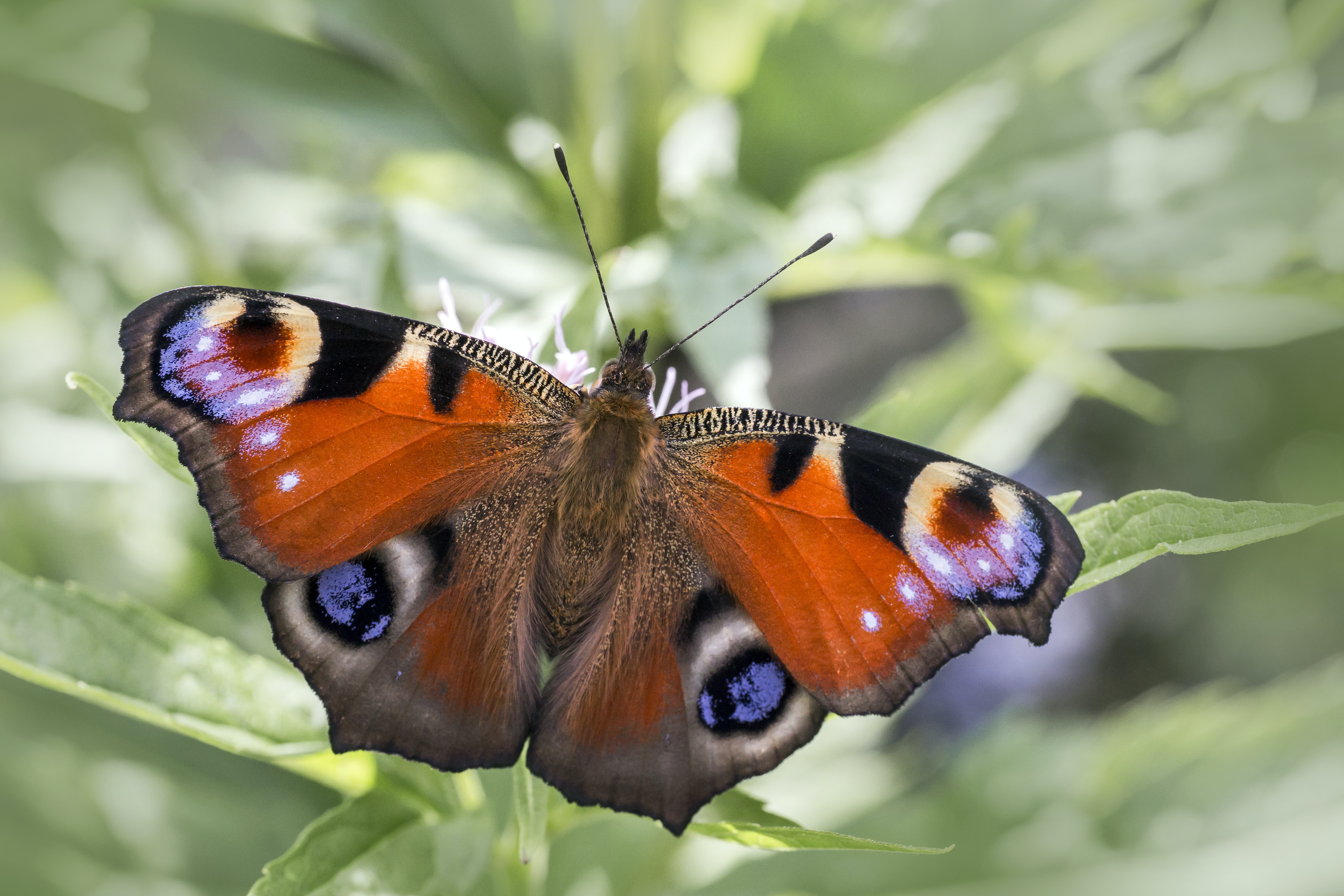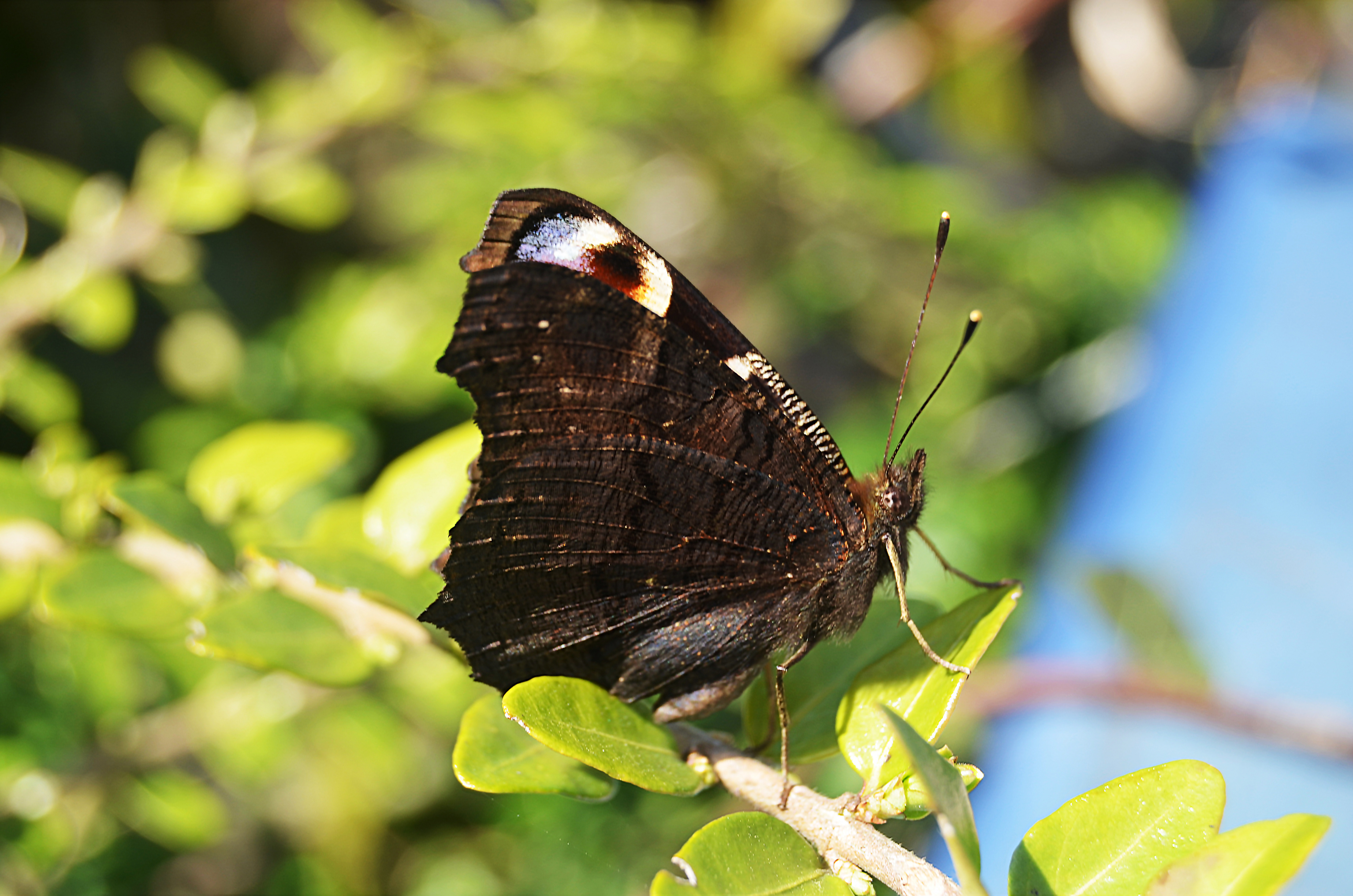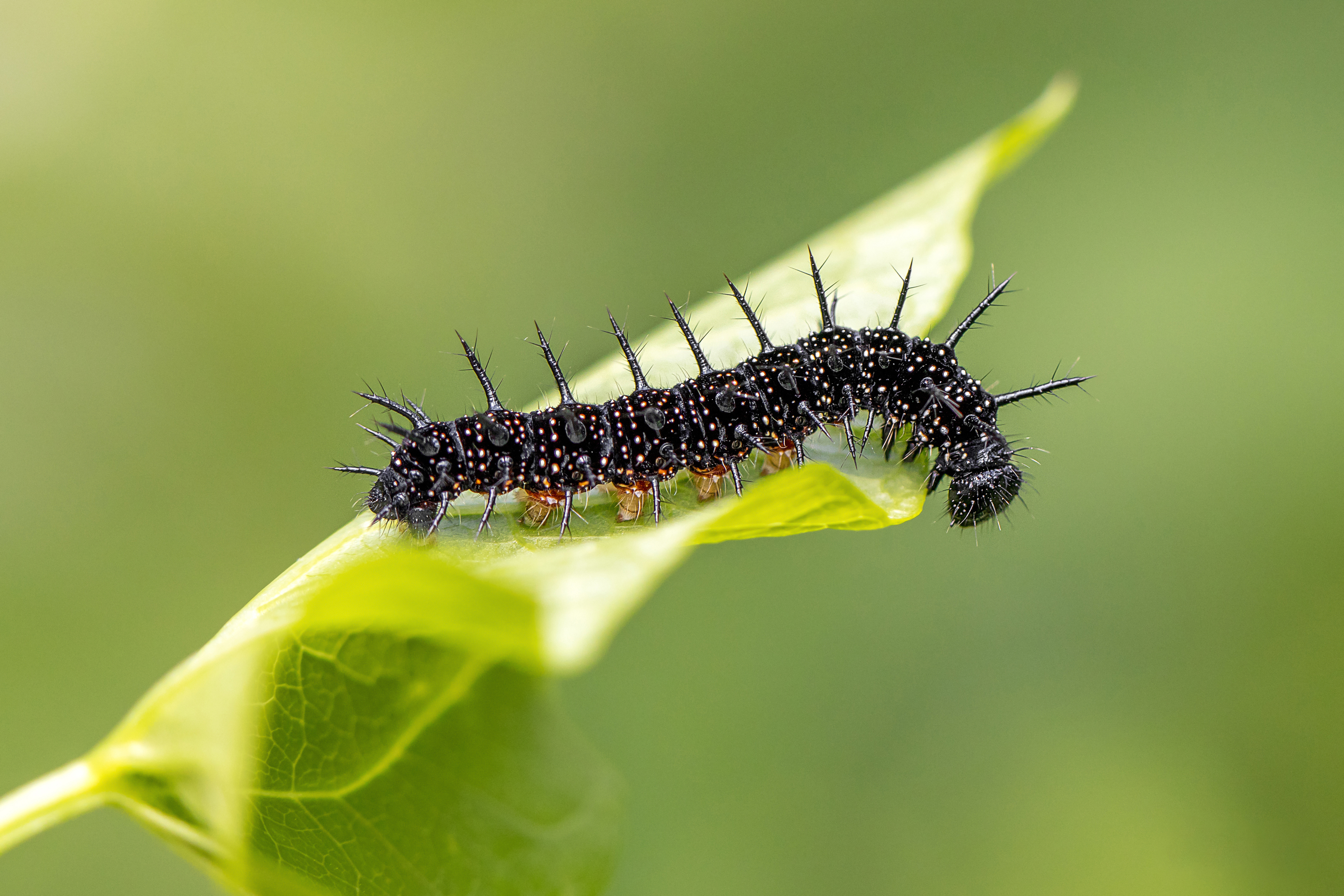Peacock Butterflies
Peacock Butterflies
Written by Rafael Fernandes
Peacock butterflies, known scientifically as Aglais io, are a stunning and highly recognisable species due to their intricate wing pattern. Their colours are sharply contrasted by their duller marking on the underside of their wings giving them the slight appearance of dead leaves. Their wings are mainly red with some browns found around the edge of the wings. The eye like marking on their wings is what gives them their common name due to their similarity to a peacock's feathers. Their body is blanketed with brown hairs and their wings have thousands of minute scales which contain the pigments and give the butterfly its colouration. This species is a medium to large species of butterfly with a wingspan of 63-69mm with the females typically being larger in size than the males.
Defense
The peacock has a variety of features which act as protection for them like their undersides looking like dead leaves this helps camouflage them from potential predators and can help them hide in dead leaf piles during hibernation. Their colourful wings are also a great predator deterrent as when they feel threatened. They will quickly open their wings exposing the predator to their “eyes” this can frighten or confuse the predator allowing the butterfly to swiftly escape. They can also create a hissing noise by rubbing their wings together as another way of scaring or warning predators. Their “eyes” on their wings are also conveniently placed on the edges of their wings this is beneficial to them as birds typically aim for eyes first so birds will attack the butterfly wings instead of their main bodies. Butterflies can still escape from a predator even with part of its wing broken. The host plant for their larvae also acts as a great defence as many animals will avoid nettles. It is also thought that the caterpillars of this species move their body from side-to-side together in case of a disturbance to create the appearance of a larger animal. These caterpillars also produce green liquids if disturbed and can also curl up and fall to the ground in an attempt to escape predators. The chrysalis colouration also varies in this species this is likely to camouflage better with their environments.
Habitat
This species is common and can be found in a range of habitats so they can often be a familiar sight in gardens, however, they tend to favour woodland edges or clearings. Other habitats in which these butterflies can be sighted include fields, meadows, parks, hills, and some have also been recorded in mountains up to 2,500m above sea level. This species is widespread, can be found throughout the UK, and recent records suggest its range is expanding up north.
Ecology
Just like other butterflies they help with the pollination of many flowering plants during their frequent visits for nectar as they spread pollen from plant to plant with their hairy body. The peacock butterfly has been observed to suffer from parasites. wasps have been seen laying their eggs on the caterpillars so their larvae can consume them for food, a similar interaction occurs with some species of flies. There is even some insect killing fungi that is known to affect the hibernating peacock butterflies. Peacock butterflies are also predated on by some species of spiders that attack and consume the caterpillars and rodents like wood mice also feed on hibernating adult butterflies if they get the opportunity to. Lastly a variety of birds will gladly snatch and eat these butterflies during flight such as blue and great tits.
Luckily, this species is not under any immediate threats and is considered not threatened in Europe by the IUCN red list however, in recent years the population has decreased quite considerably particularly in 2021 in the Uk. if you would like to help them or attract them to your garden then you can plant flowers rich in nectar as well as supplying logs piles for them to overwinter. You could also allow a section of your garden to run wild this will attract butterflies and other wildlife due to the native plants that will likely immerge. If you do not mind it might also be worth leaving stinging nettles to give peacock butterflies the chance to lay their eggs on.
Caterpillars
The caterpillar of this species is predominantly black with white dots scattered throughout its body they also have black spines found along their backs. Caterpillars are usually found feasting on common nettles although they are occasionally viewed in small nettles. The cocoon of this species is green or sometimes brown in colour with two distinctive horns found on the head and it hangs from its host plants by the abdomen.
Lifecycle
Peacock butterflies are long lived with some living up to a year they can be seen emerging from hibernation as adults during the spring and have been sighted emerging as early as march to reproduce. During May is when many of the eggs are laid, the females can lay up to 500 eggs which are green in appearance under nettles. Caterpillars typically emerge from these eggs around June or early July and the larvae begin to work together on creating a web of silk on the tops of the nettles this is likely to provide some protection from predators. Once fully grown they begin creating their cocoon in which they then emerge as butterflies from around Jully. After leaving their chrysalis the butterflies begin to pump blood around its body to fully extend their wings before they finally take flight. During the winter, these butterflies hibernate in hollow trees, deadwood, sheds, attics, and other places they do this by folding their wings and sleeping this allows the underside of the wings to be in display allowing them to blend in and remain undisturbed. Finally, these butterflies will begin to re-emerge in early spring to breed.
Food Habits
Adult peacock butterflies feed on a multitude of flowering plants some of which include dandelions, clovers, marjoram, primrose, bluebells, ragwort, asters, and thistles. They have also been known to feed on sap from trees, honeydew, and fruits. Due to the butterfly's longevity this species has adapted to change the flowers and other food sources it feeds on depending on the season. These butterflies need to eat enough to build up sufficient energy reserves to prepare for their hibernation.
References: Peacock | Butterfly Conservation (butterfly-conservation.org), Peacock butterfly facts | Trees for Life, Peacock Butterfly | Common British Butterflies - The RSPB, Peacock (Aglais io) - Butterflies - Woodland Trust, Peacock | The Wildlife Trusts, Van Swaay, C., Wynhoff, I., Verovnik, R., Wiemers, M., López Munguira, M., Maes, D., Sasic, M., Verstrael, T., Warren, M. & Settele, J. 2010. Aglais io (Europe assessment). The IUCN Red List of Threatened Species 2010: e.T174218A7030659.
Rafael Fernandes is a student completing his Level 3 Animal Management Diploma at Highlands College.



